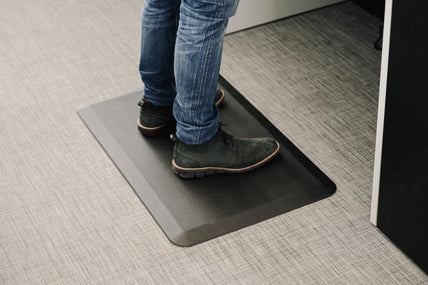How sitting impacts our spinal health, according to an Australian Neurosurgeon and Spine Surgeon
By Daniel Angelini on May 29, 2020Lower back pain is the leading cause of disability in the developed world. It is a chronic condition that has serious physical and economic effects. Sustained back pain results in a lower quality of life; people who suffer from it find that their range of motion is severely limited, and this results in a weakened capacity for even the simplest daily tasks.
About four million Australians or one in six people in the country had lower back pain in 2017-2018. Chronic lower back pain is common among people aged 25-34; in fact, this age group shares the same percentage as people aged 65-74.
Changes to daily routines, coupled with daily exercise can improve a person’s back strength. Knowing more about chronic back pain will also help a patient understand the treatments and lifestyle changes they need to make. We talked to Dr David Oehme, MBBS, one of the top neurosurgeons in the country, to help us understand more about this condition.
Humans are not meant to be sedentary
Dr Oehme stresses that prolonged sitting goes against our evolution. “We are designed to be active people. Humans developed to walk and move on two limbs, standing upright; many don’t realise just how unnatural sitting is,” he said. A stand-up workspace seems like a novelty today, but standing while working is what the human body is built to do.
When a person is upright, there is less pressure on his spine as compared to when he is sitting. According to Dr Oehme, the L4, L5 and S1 vertebrae, along with their intervertebral discs, are the ones most susceptible to degeneration. Incidentally, this part of the spine is where 85 per cent of spinal surgeries are performed.
When we do not use our core muscles to stand up, walk around or run, it is not only the bones that grow weaker. Muscles can also atrophy, or waste away, from lack of physical activity. When sitting we don’t use our core muscles. Being overweight is also a risk factor for muscle atrophy. “Wasted paraspinal muscles lead to worse back pain as extra weight puts more pressure through the spine,” the doctor said, likening it to carrying a heavy backpack.
Workplaces bear the brunt of effects
Chronic back pain can be the cause of frequent medical leaves or days off from work, resulting in lost revenue from decreased productivity. Patients with back pain might need to take time off work for six weeks to a few months in a year.
The cost of treating lower back pain can also add up, with Australian patients spending $4.8 billion every year on the management of its symptoms. With these health and financial consequences, it makes sense to prevent the onset of symptoms rather than treat them.
How being active makes your back stronger
According to Dr Oehme, simply standing upright is better than sitting. Standing with good posture can keep core muscles engaged, which is good for intradiscal and spinal health. Using a standing desk setup at work will help employees stay productive while keeping their backs strong. A good standing posture will also contribute to heart and lung health.
Tips for making changes for back health
Health and fitness is all about proactive behaviour. Our expert maintains that shaping your lifestyle around goals you want to achieve, rather than minimizing symptoms you already have, is the best way to keep yourself healthy.
If you are struggling to incorporate standing up into your work routine, you can start with a standing desk converter, which modifies your existing furniture and turns it into a more ergonomic workstation.
Conclusion
Doctors recognize that a large part of recovery and pain management is psychologically driven. If a person is motivated to change or cope with their condition, they will be on their way to recovery. Companies should invest in the health of their employees and encourage them to adopt healthy lifestyles. Workers can also use equipment like electric standing desks, which keep their spine and core engaged and prevent atrophy or degeneration.
If you are looking for sellers of standing desks in Australia, we’re the ones to call. We help to uplift your workplace with our durable natural wood standing desks - get in touch to see how!










